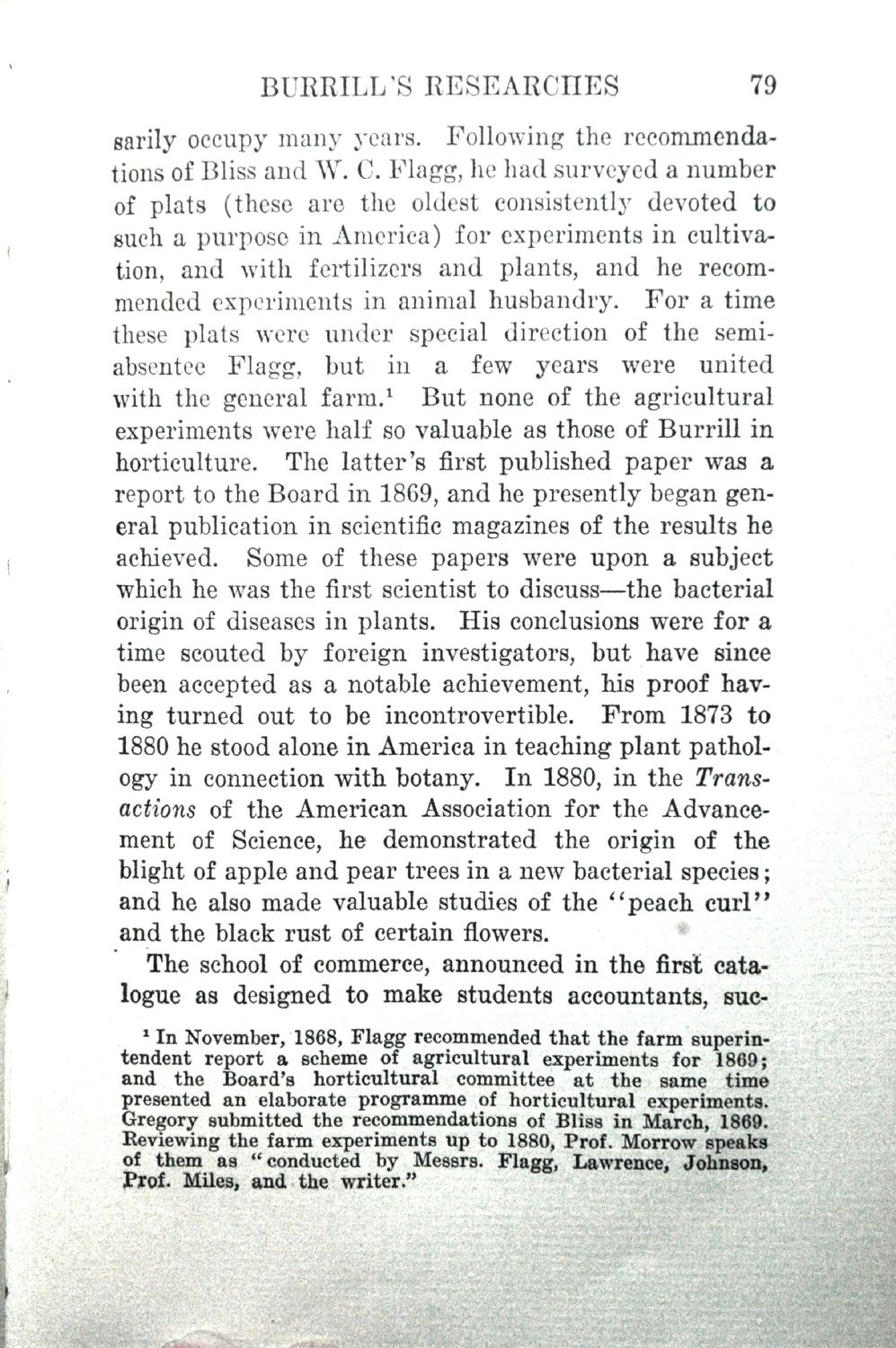| |
| |
Caption: Book - History of the University (Nevins)
This is a reduced-resolution page image for fast online browsing.

EXTRACTED TEXT FROM PAGE:
BURRILL'S RESEARCHES 79 sarily occupy many years. Following the recommendations of Bliss and W. C. Flagg, he had surveyed a number of plats (these are the oldest consistently devoted to such a purpose in America) for experiments in cultivation, and with fertilizers and plants, and he recommended experiments in animal husbandry. For a time these plats were under special direction of the semiabsentee Flagg, but in a few years were united with the general farm.1 But none of the agricultural experiments were half so valuable as those of Burrill in horticulture. The latter's first published paper was a report to the Board in 1869, and he presently began general publication in scientific magazines of the results he achieved. Some of these papers were upon a subject which he was the first scientist to discuss—the bacterial origin of diseases in plants. His conclusions were for a time scouted by foreign investigators, but have since been accepted as a notable achievement, his proof having turned out to be incontrovertible. From 1873 to 1880 he stood alone in America in teaching plant pathology in connection with botany. In 1880, in the Transactions of the American Association for the Advancement of Science, he demonstrated the origin of the blight of apple and pear trees in a new bacterial species; and he also made valuable studies of the "peach curl" and the black rust of certain flowers. The school of commerce, announced in the first catalogue as designed to make students accountants, sucIn November, 1868, Flagg recommended that the farm superintendent report a scheme of agricultural experiments for 1869; and the Board's horticultural committee at the same time presented an elaborate programme of horticultural experiments. Gregory submitted the recommendations of Bliss in March, 1869. Reviewing the farm experiments up to 1880, Prof. Morrow speaks of them as "conducted by Messrs. Flagg, Lawrence, Johnson, Prof. Miles, and the writer." 1
| |